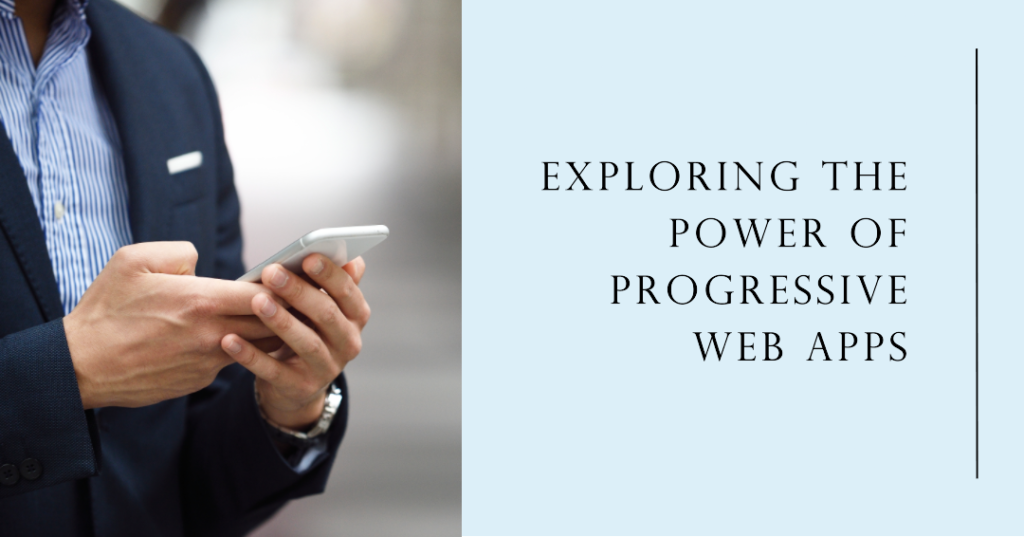In this blog post, we will dive into the concept of Progressive Web Apps (PWAs) and explore how they offer next-level mobile experiences. Progressive Web Apps combine the best of both web and mobile app technologies, providing users with fast, reliable, and engaging experiences on their mobile devices without the need to download or install a separate app.
1. The Concept of Progressive Web Apps: Progressive Web Apps are web applications that leverage modern web technologies to deliver app-like experiences on mobile devices. They are designed to be responsive, fast-loading, and capable of working offline, providing users with a seamless and engaging mobile experience.

2. Benefits of Progressive Web Apps:
a. Accessibility and Reach: PWAs can be accessed through a web browser, eliminating the need for users to download and install a separate app. This broadens the reach of your mobile experience, making it accessible to a wider audience.
b. Offline Functionality: PWAs can work offline or with limited connectivity, allowing users to access and interact with content even in the absence of an internet connection. This enhances user convenience and ensures a consistent experience regardless of network availability.
c. App-Like Experience: PWAs offer a user experience similar to that of a native mobile app. They can be installed on the home screen, send push notifications, and have full-screen capabilities, providing users with a familiar and immersive experience.
d. Fast Performance: PWAs are built with performance in mind, utilizing techniques like caching and preloading to deliver fast-loading and responsive experiences. This reduces latency and improves overall user satisfaction.
e. Lower Development and Maintenance Costs: Developing a PWA eliminates the need to create separate native apps for different platforms, reducing development and maintenance costs. With a single codebase, you can reach multiple platforms and devices.

3. Key Features of Progressive Web Apps:
a. Responsive Design: PWAs are designed to adapt and provide an optimal user experience across various screen sizes and devices, including mobile phones and tablets.
b. Service Workers: Service workers enable offline functionality by caching resources and allowing the app to run even when there is no internet connection. They can also handle background sync and push notifications.
c. App Shell Architecture: PWAs follow the app shell architecture, which separates the core application structure (the shell) from the dynamic content. This ensures faster initial loading and improved performance.
d. Secure Connections (HTTPS): PWAs require a secure HTTPS connection to ensure data privacy and protect users’ sensitive information. This helps build trust and confidence in your app.

4. Use Cases for Progressive Web Apps:
a. E-commerce: PWAs can offer a seamless and engaging shopping experience, even on mobile devices. Users can browse products, add items to their cart, and make purchases without the need for a dedicated app.
b. Content Publishing: Publishers can leverage PWAs to deliver fast-loading and immersive content experiences, enhancing user engagement and providing offline access to articles or news.
c. Productivity Tools: PWAs can serve as productivity tools, providing users with offline access to documents, note-taking capabilities, and task management features.

Conclusion: Progressive Web Apps provide next-level mobile experiences by combining the best of web and app technologies. With benefits such as accessibility, offline functionality, app-like experiences, fast performance, and lower development costs, PWAs offer a compelling solution for businesses looking to deliver engaging mobile experiences without the need for users to download and install separate apps.

